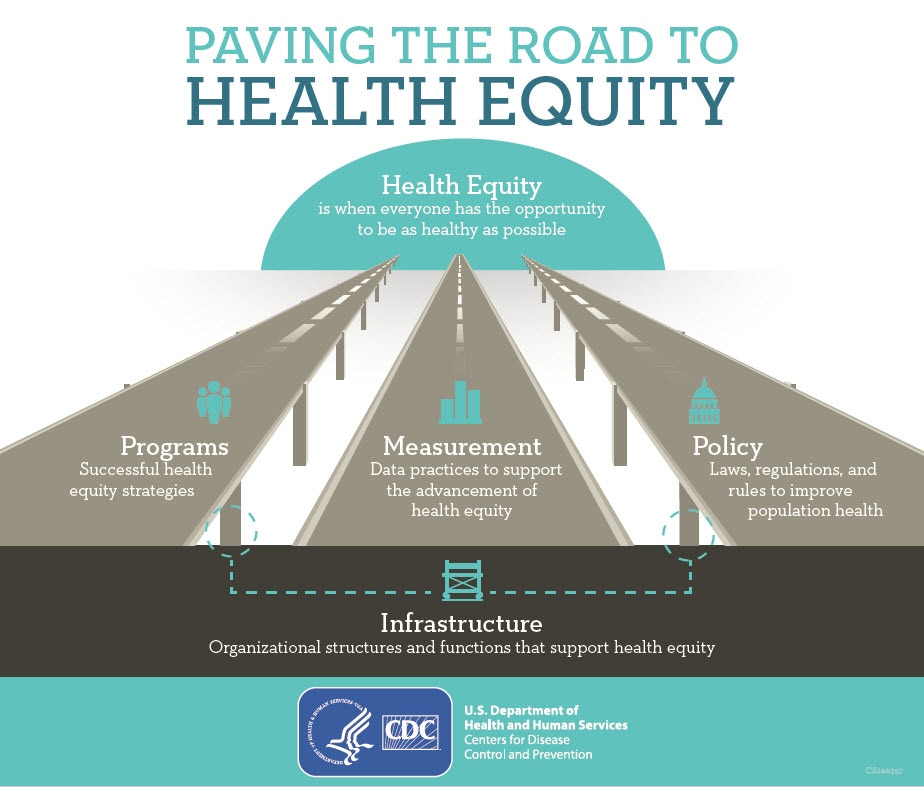Paving the Road to Health Equity
In collaboration with the Association of State and Territorial Health Officials, CDC published a special supplement to the Journal of Public Health Management & Practice focusing on health equity titled, Strengthening the Science and Practice of Health Equity in Public Health.
As defined by the U.S. Department of Health and Human Services, health equity is the attainment of the highest level of health for all people. Population-level factors, such as the physical, built, social, and policy environments, can have a greater impact on health outcomes than individual-level factors. The root causes of health inequity can be directly linked to a failure to address these population-level factors. In addition, linkages between science, policy, and practice are critical to achieving health equity.
Over the past decade, momentum to address social determinants of health (SDOH) and health equity increased. Landmark reports and national initiatives argue for the implementation of research, policies, and programs that address SDOH to reduce health disparities, which are differences in health outcomes and their causes among groups of people.
Health equity is when everyone has the opportunity to be as healthy as possible.
- Programs: Successful health equity strategies
- Measurement: Data practices to support the advancement of health equity
- Policy: Laws, regulations, and rules to improve population health
- Infrastructure: Organizational structures and functions that support health equity
Health equity can be characterized as action to ensure all population groups living within an area have access to the resources that promote and protect health. This article describes examples of public health programs that include elements that enhance health equity.
The public health infrastructure required for achieving health equity is complex. It should be responsive to current and emerging priorities and capable of providing the foundation for developing, planning, implementing, and evaluating health initiatives. This article examines how these infrastructure requirements are operationalized to promote health equity at CDC.
Reduction of health disparities and advancement of health equity in the United States require high-quality data as well as proper tools to facilitate accurate interpretation of these data. This article proposes a set of recommended practices in measurement of health disparities, health inequities, and social determinants of health at the national level to support the advancement of health equity.
Public health policy approaches have demonstrated measurable improvements in population health. Yet, “one-size-fits-all” approaches do not necessarily impact all populations equally and, in some cases, can widen existing disparities. The intent of this article is to describe how some current policies and policy areas that have a health equity orientation are being used with the aim of reducing health disparities.
